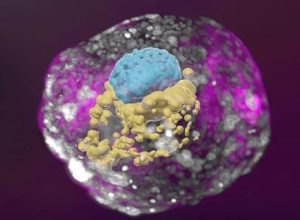
New Delhi: Scientists have created human embryo-like structures without using sperm, eggs, or a womb, providing hope for ongoing research on miscarriage and birth abnormalities.
A study team at the Weizmann Institute of Science, led by Professor Jacob Hanna, asserts that they have “created complete models of human embryos from stem cells cultured in the lab – and managed to grow them outside the womb up to 14 days”.
This research differs from the previous one on the basis that it uses chemically altered embryonic stem cells rather than genetically developed ones, producing models that more closely resemble real human embryos, replete with a yolk sac and amniotic cavity. According to James Briscoe of the British Francis Crick Institute, these similarities might make these models particularly useful for researching diseases including miscarriage, birth abnormalities, and infertility.
Briscoe, a major group leader and associate research director at the nonprofit organisation supporting biomedical research, observed that the model seemed to produce all of the different cell types that are involved in the creation of early-stage tissues. But both the study’s authors and experts who weren’t involved in it stress that these models shouldn’t be mistaken for genuine embryos. According to the research, the structure is quite similar to the in-utero environment but not exactly the same.
Additionally, this study has not yet undergone peer review. Nevertheless, Darius Widera, a stem cell biology specialist at the UK’s University of Reading, told news agency AFP that the study and other recent work demonstrates how human embryo models are becoming increasingly complex and accurate to developmental processes.
The study shows that a strong regulatory framework is more important than ever before. It is essential to emphasise that the Weizmann Institute’s study does not entail implanting the models into a human or animal womb or permitting their growth over the 14-day mark.




 Driving Naari Programme launched in Chandigarh
Driving Naari Programme launched in Chandigarh






























